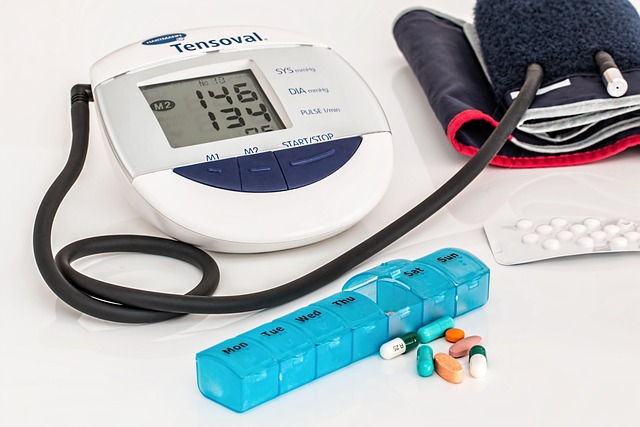Seizure Treatment: Options, Wearables, and Lifestyle Support
Seizure treatment involves a range of approaches aimed at reducing seizure frequency, minimizing injury risk, and improving quality of life. Care plans typically combine medications, behavioral strategies, monitoring tools, and sometimes surgery or device-based therapies. Decisions are individualized based on seizure type, underlying causes, age, coexisting conditions, and personal preferences. Understanding available options and practical supports can help people with seizures and their caregivers make informed choices alongside clinicians, and can clarify how technology and everyday habits play a role in management.

This article is for informational purposes only and should not be considered medical advice. Please consult a qualified healthcare professional for personalized guidance and treatment.
How does seizure treatment affect overall health?
Treatment for seizures aims not only to stop episodes but also to protect broader health. Anti-seizure medications (also called antiseizure or antiepileptic drugs) can reduce neuronal excitability and lower seizure frequency for many people, but they can carry side effects that affect mood, cognition, or organ systems. Effective management often requires balancing seizure control with tolerability. Regular follow-up, medication reviews, and monitoring for interactions or long-term effects are important parts of preserving overall health while treating seizures.
What wearable tools help monitor seizures?
Wearable devices can supplement clinical care by detecting motor patterns, heart rate changes, or movement signatures associated with some seizures. Examples include wrist-worn bands, smartwatches, and sensor-equipped garments that trigger alerts for convulsive activity. Mattress sensors and bedside monitors can detect nighttime movement or breathing changes. While wearables offer extra data and safety alerts, they have limits: they don’t detect all seizure types and are not a substitute for medical evaluation. Data from wearables is most useful when reviewed with healthcare teams to inform treatment decisions and safety planning.
How can lifestyle choices influence seizure control?
Lifestyle factors can affect seizure likelihood and overall resilience. Regular sleep, consistent medication adherence, stress management, limiting alcohol, and avoiding known individual triggers (such as flashing lights for photosensitive cases) are commonly recommended. Nutritional strategies, like the ketogenic diet or modified variants, may be beneficial for certain people under specialist supervision. Exercise, social support, and mental health care also contribute to well-being and can indirectly improve seizure outcomes. Lifestyle adjustments should be discussed with clinicians to ensure they complement medical treatments safely.
What medical treatments are used for seizures?
Medical treatment typically begins with antiseizure medications chosen for the person’s seizure type and health profile. If medications are ineffective (drug-resistant seizures), options can include epilepsy surgery to remove seizure-generating tissue, neurostimulation devices such as vagus nerve stimulation (VNS) or responsive neurostimulation (RNS), and dietary therapies for select cases. Emergency care for prolonged seizures (status epilepticus) often involves fast-acting medications in hospital settings. Each option carries risks and benefits that require individualized evaluation by neurologists or epilepsy specialists.
How is epilepsy managed long term for different people?
Long-term epilepsy management is multidisciplinary and often lifelong. Regular assessments include seizure diaries, EEGs, imaging, medication adjustments, and safety planning for driving, work, and daily activities. For women of childbearing age, treatment discussions consider pregnancy planning and medication risks. Transition planning is important for children moving to adult care. Coordination with primary care, mental health, and community supports helps address comorbidities and social needs. Local services or epilepsy centers in your area can provide comprehensive evaluations and specialized programs when standard approaches are insufficient.
Practical considerations when choosing supports and services
Selecting effective supports involves matching clinical options, monitoring tools, and lifestyle interventions to individual priorities. Discuss realistic goals with clinicians—whether reducing frequency, preventing injuries, improving cognition, or enabling daily activities—and ask how wearable data or specialist referrals might inform adjustments. Consider safety planning (first-aid training for caregivers, seizure action plans) and legal or occupational implications of a seizure diagnosis. Insurance coverage, device availability, and access to local services can influence which options are practical in a person’s setting.
Seizure treatment encompasses medications, devices, lifestyle strategies, and sometimes surgery, all tailored to the individual’s condition and circumstances. Wearable technology and behavior changes can enhance monitoring and quality of life but do not replace clinical assessment. Long-term management benefits from coordinated care, periodic reassessment, and clear communication between people with seizures, families, and healthcare teams. For personalized recommendations, consult qualified medical professionals who can interpret symptoms, test results, and risks in context.






